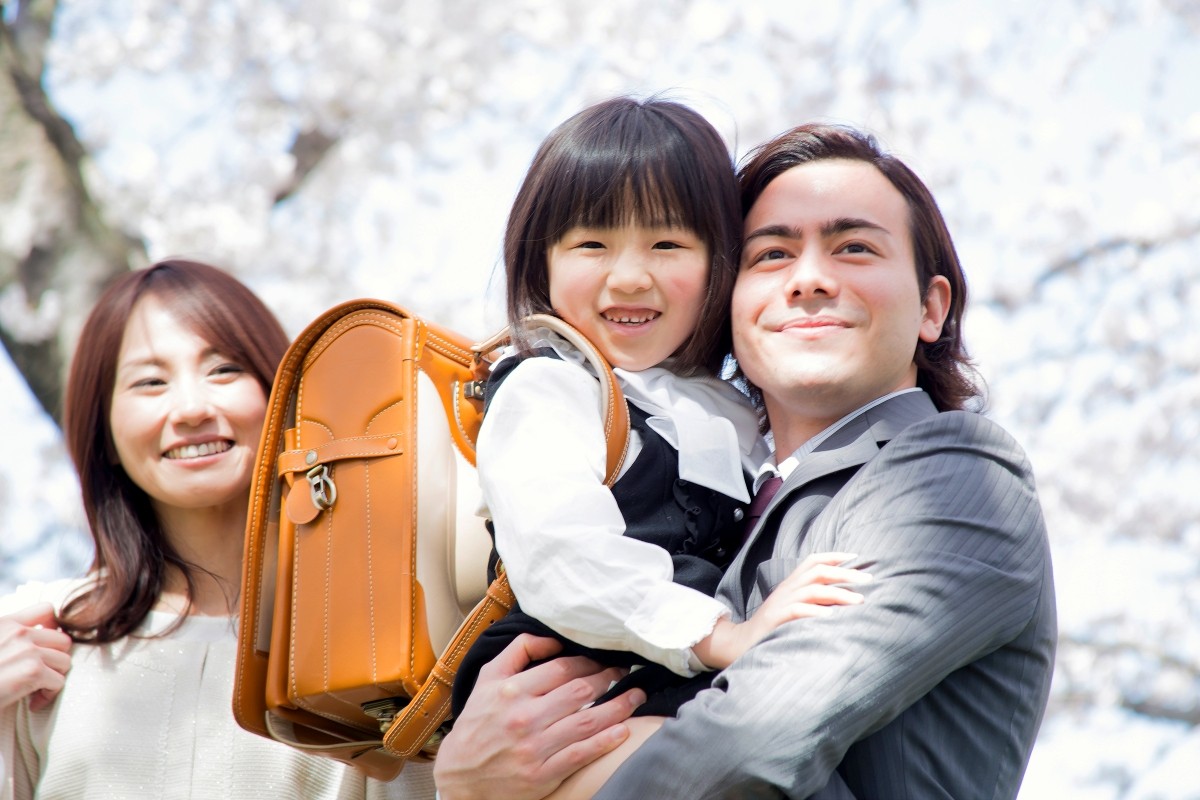
Have you ever seen scenes in Japanese anime or dramas where characters attend an entrance ceremony? In Japan, the school year begins in April when the cherry blossoms are in bloom, and entrance ceremonies are celebrated as a significant milestone in life. Let’s take a closer look at this unique cultural tradition in Japan, which differs from those in other countries.
* By purchasing or reserving products introduced in this article, a portion of the sales may be returned to FUN! JAPAN.
What is Japan’s Unique Entrance Ceremony?
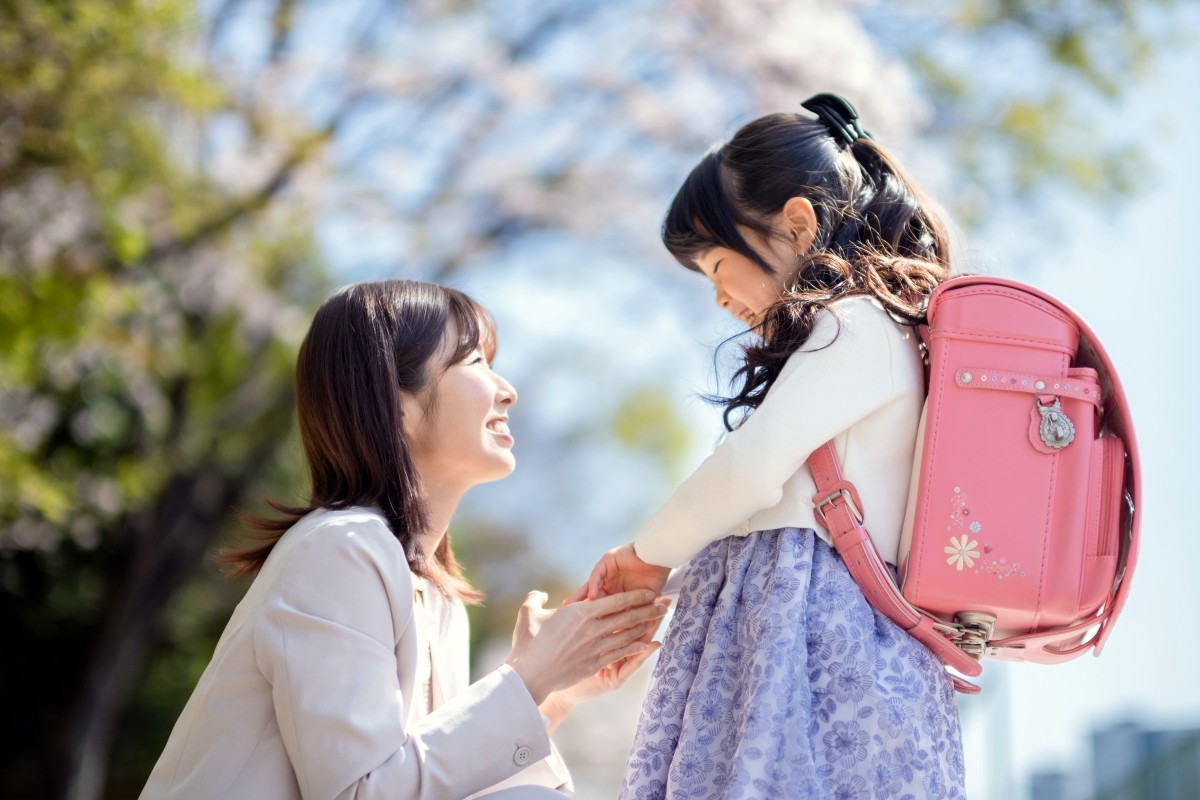
The entrance ceremony is a traditional event in April that marks the start of a new school year in Japan. These ceremonies are held when students enter elementary school, junior high school, high school, and university. It’s a special occasion to celebrate the beginning of a new chapter in one’s school life, so both children and adults dress formally—and sometimes extravagantly—to honor the day and embrace this new beginning.
Interestingly, not many countries hold entrance ceremonies as grandly as Japan does. In many places, there might only be an orientation, if anything at all. This makes Japan’s entrance ceremony a truly unique cultural tradition.
When Are Entrance Ceremonies Held?
ust before the new school term begins.
The specific dates are determined by each prefecture, city, or municipality. For public schools, ceremonies are typically held on the same day across all schools. For private schools, the schedule varies depending on the institution.
In some municipalities, entrance ceremonies for high schools, junior high schools, and elementary schools are scheduled on different days in that order. This is to accommodate families with siblings who are starting school in the same year.
Most municipalities post the schedules for public school entrance ceremonies on their official websites. Additionally, public schools provide details about the dates, required items, and other preparations during entrance guidance sessions held around February. For high schools and universities, this information is shared after entrance exams are completed.
University entrance ceremonies are also commonly held during the first week of April, although the schedule can vary depending on the university or department. Unlike high schools, attendance at university entrance ceremonies is not mandatory, so some students choose not to attend.
General Flow of an Entrance Ceremony
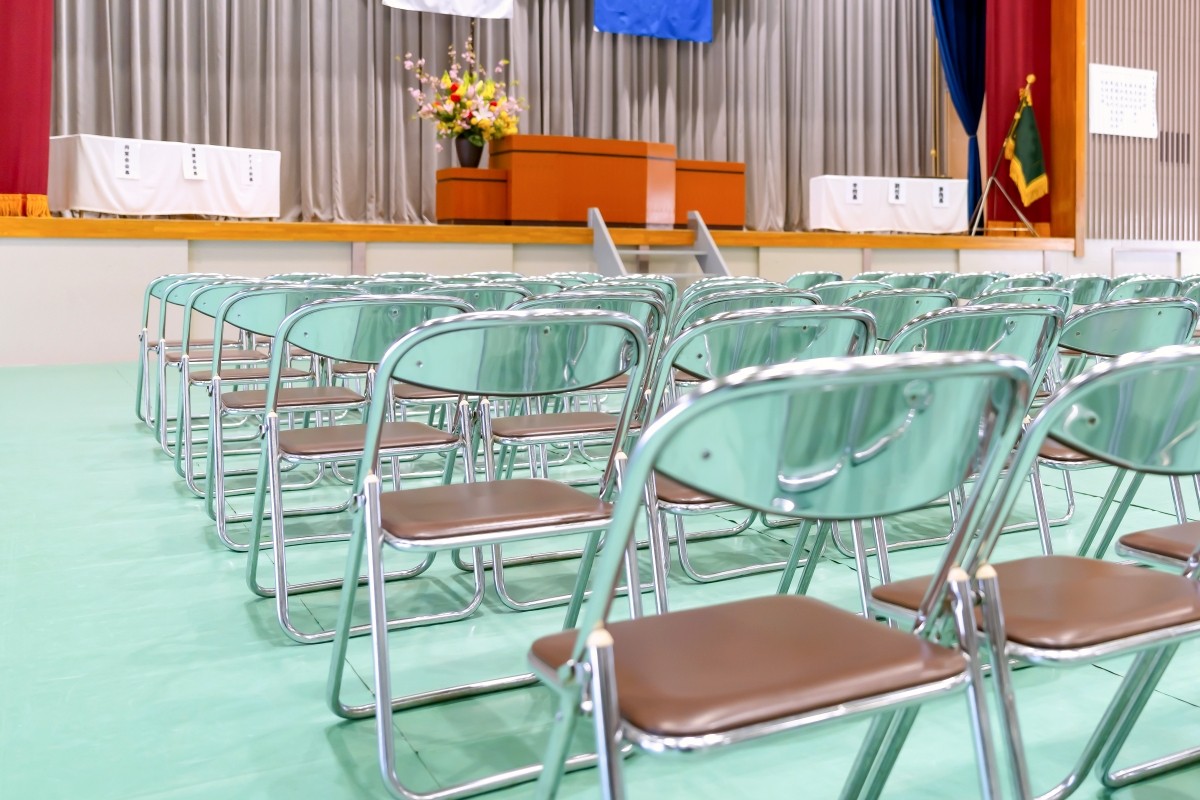
Here is the typical flow of an entrance ceremony:
- Entrance of new students
- Opening remarks
- Speech by the principal
- Introduction of distinguished guests
- Reading of congratulatory telegrams
- Speeches by current students and new students
- Chorus or orchestra performance
- Introduction of homeroom teachers
- Closing remarks
The content and order may vary depending on the school, but this is the general structure.
In some cases, additional speeches by the PTA president or the head of the board of education are included. After the ceremony, group photos of each class are often taken in the gymnasium or on the school grounds.
For elementary, junior high, and high schools, ceremonies are almost always held in the school gymnasium. Depending on the size of the gymnasium, current students may not attend, or only the sixth graders may be present.
A Child’s Schedule on the Day of the Entrance Ceremony
Arriving at School with Parents
On the day of the entrance ceremony, children and their parents arrive at school at the designated time and check in at the reception desk.
Heading to the Classroom with Upperclassmen
After checking in, children separate from their parents and go to their classrooms. In elementary schools, upperclassmen (usually sixth graders) often escort new students to their classrooms.
Greeting from the Homeroom Teacher
The homeroom teacher greets the students.
Moving to the Gymnasium for the Ceremony
Following instructions from the homeroom teacher, students go to the gymnasium with their classmates for the ceremony.
Group Photo Session
After the ceremony, group photos are taken in the gymnasium.
Returning to the Classroom for a Long Homeroom Session (LHR)
Students return to their classrooms, where they receive textbooks and handouts. They also get information about the schedule for the following days.
Heading Home
Students leave school with their parents.
A Parent’s Schedule on the Day of the Entrance Ceremony
Arriving at School with Your Child
Parents and children go to school together and submit the required documents at the reception desk.
Separating from Your Child and Moving to the Gymnasium
Parents then proceed to the gymnasium, where seats are provided for them. Depending on the school, the seats may either be assigned or available on a first-come, first-served basis.
Attending the Entrance Ceremony
Observe the ceremony quietly and respectfully.
Taking a Group Photo
Parents may join the group photos taken in the gymnasium or on the school grounds.
Moving to Your Child’s Classroom
In the classroom, parents listen to the homeroom teacher’s guidance. This includes information about the following days and explanations about distributed materials.
Heading Home with Your Child
After dismissal, families often take photos together or go out for a celebratory meal.
If you wish to hire a professional photographer, check out fotowa 👉 here
Dress Code for the Entrance Ceremony
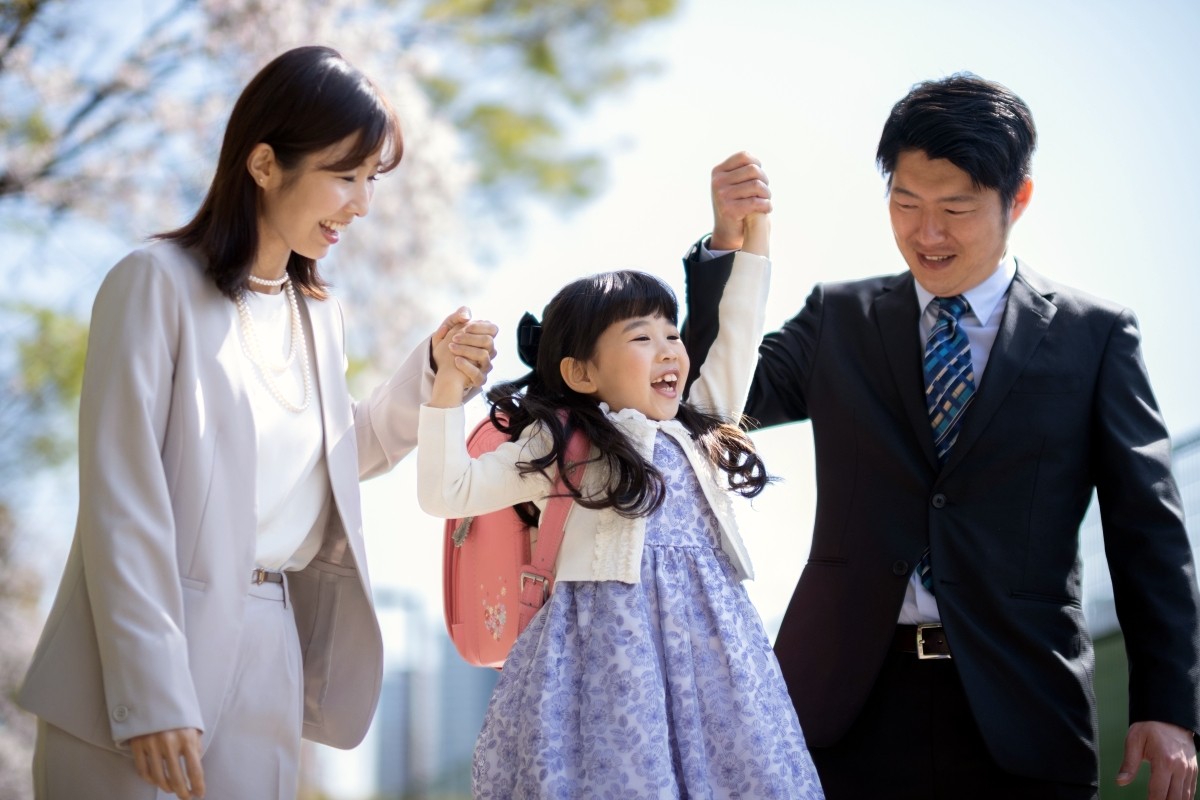
The entrance ceremony is an important milestone, so it’s essential for both children and parents to dress appropriately. Here, we’ll explain what type of attire is suitable for the ceremony, along with some tips to keep in mind.
Examples of Attire for Parents: Formal Wear for Mothers, Suits for Fathers
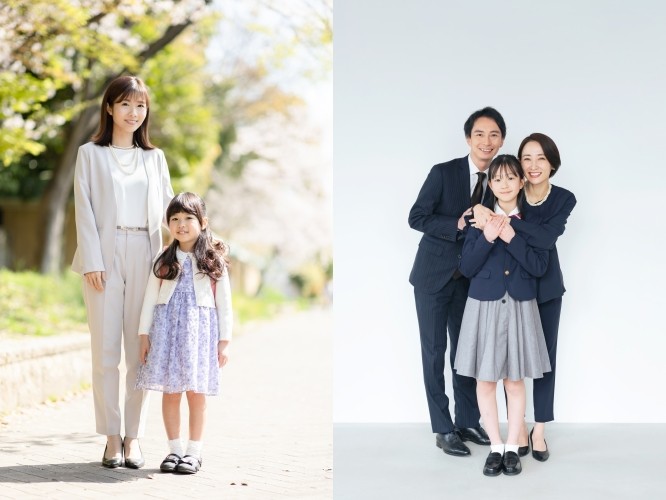
Mothers often choose suits in soft colors like beige, white, or pink. Both skirts and pants are acceptable, but it’s best to avoid skirts that are too short. Beige stockings are considered proper etiquette for formal events, so don’t forget to wear them.
Accessories should be understated, with pearls being a suitable choice for their subtle elegance. Adding a floral corsage or a brooch to your suit can enhance the festive look.
It’s advisable to avoid shirts with a deep neckline or outfits that reveal your body shape. Aim for a refined and composed appearance.
Wearing a kimono is also a great option for this formal occasion. Opt for semi-formal or informal styles like "visiting kimono" (houmongi), "tsukesage," or "plain-colored kimono" (iromuji). Soft hues such as pale pink, cream, or light blue are ideal for the celebratory atmosphere of the entrance ceremony.
For fathers, dark suits in navy, black, or gray are recommended. Since it’s spring, you can add a pop of color with your shirt or tie to avoid looking overly somber.
As the ceremony is a formal event, avoid wearing an old suit that looks worn out. Instead, choose a clean, well-kept suit. Button-down shirts and going without a tie can appear too casual, so it’s best to avoid these. Make sure your hairstyle is neatly styled to match the formal occasion.
Search for recommended attire for moms on Yahoo! Shopping 👉here
Purchase or rent kimonos at Kimono365 👉here
Search for recommended attire for dads on Yahoo! Shopping 👉here
Examples of Clothing for Girls: Formal Dresses or Ensembles
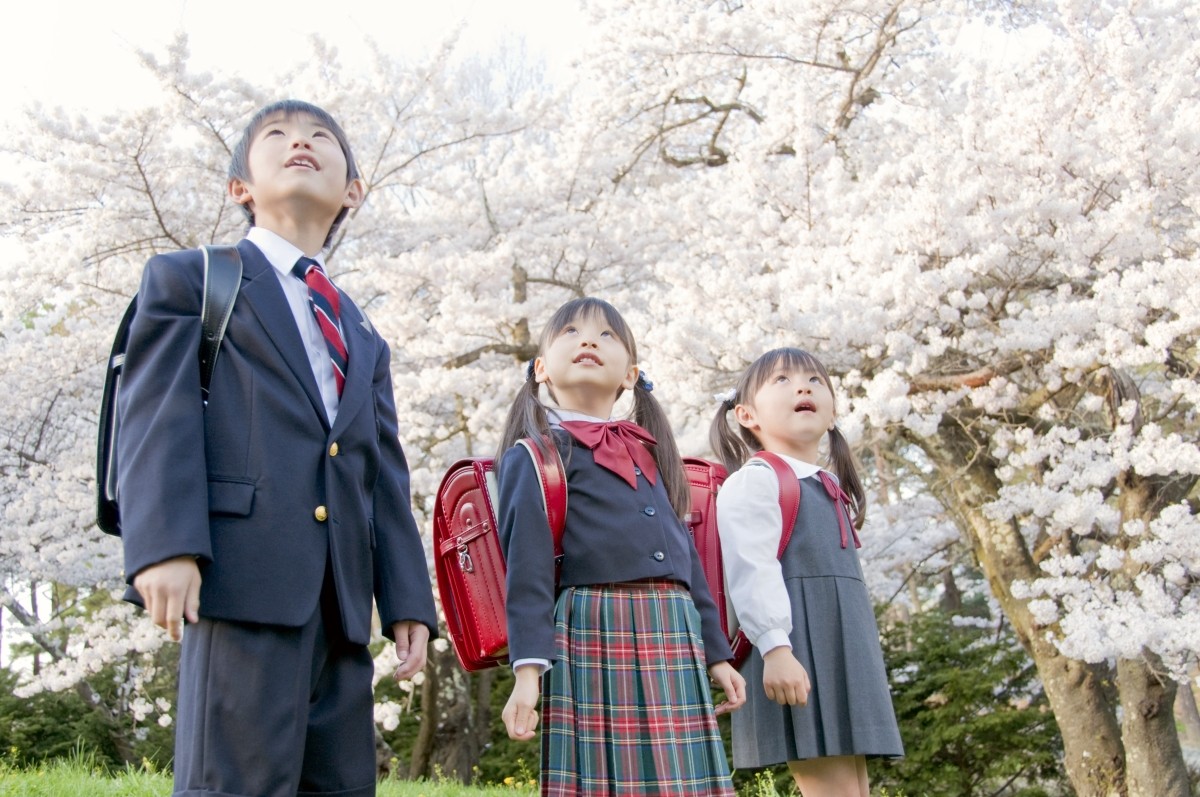
For girls, a recommended style is pairing a dress with a jacket or bolero. Popular color choices include formal dark tones, as well as pastel shades like white and pink. Subtle patterns are generally acceptable.
As with boys, it’s important to ensure the outfit is formal and appropriate for the occasion. Avoid overly flashy designs.
Hairstyles should also emphasize cleanliness. Hair accessories should be modest and convey a calm impression.
Make sure to check if the school has specific dress code requirements. This will help ensure your child’s attire aligns with school guidelines. For middle and high schools, uniforms are common, especially in urban areas, where the variety of designs for girls’ uniforms is often a point of consideration for choosing schools.
Search for recommended girls’ clothing for entrance ceremonies on Yahoo! Shopping 👉here
Examples of Clothing for Boys: Suits and Blazers
For boys, a recommended style is a suit or blazer paired with pants. For elementary school, pairing shorts with knee-high socks can create a lively impression.
Dark colors like navy or gray are safe choices for suits, but you can brighten the look with a shirt in a cheerful color, such as yellow or pink. Accessories like ties, bow ties, or pocket squares can add a touch of personality.
As with girls, don’t forget to confirm if the school has specific dress code requirements. At schools with uniforms, students will naturally attend in uniform.
Keep in mind that an entrance ceremony is a formal occasion. Aim for attire that is both clean and respectful, and ensure it doesn’t stand out excessively compared to others.
Search for recommended girls’ clothing for entrance ceremonies on Yahoo! Shopping 👉here
Etiquette for Entrance Ceremonies
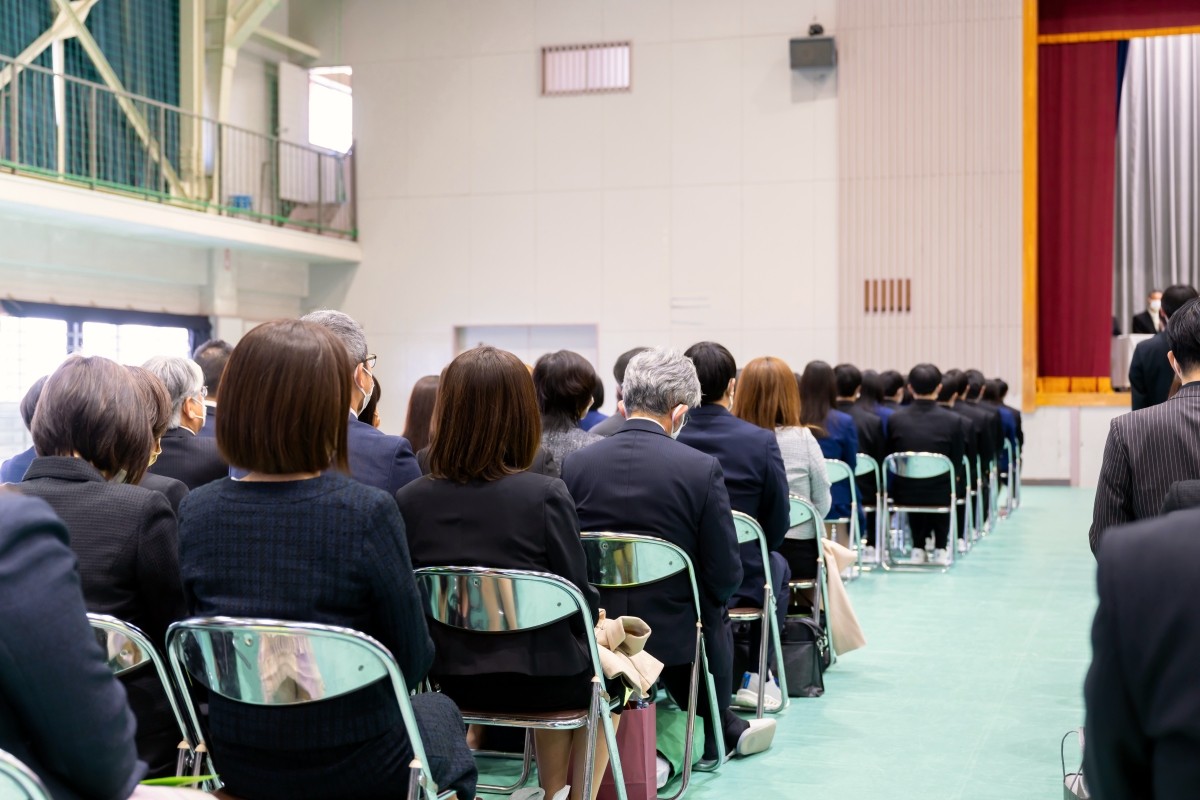
The entrance ceremony is a significant milestone and a solemn event for children. Observing proper etiquette will ensure the occasion remains special. Here are some key points to keep in mind:
Turn off your phone or set it to silent mode.
- Follow the rules for taking photos.
- Avoid speaking during the ceremony.
Electronic device sounds, such as notification tones or ringtones, can disrupt the atmosphere of the ceremony. Be sure to check your device settings before the ceremony begins.
Photo-taking rules can vary by school. For example, some schools allow photos only in designated areas or during specific moments like the entrance or exit. Confirming these rules beforehand can help avoid any issues.
Once the ceremony begins, maintain a quiet demeanor. Even whispers can disturb the solemn atmosphere. Similarly, avoid calling out to your child during entry or exit, as it may distract them or cause disruptions to the procession.
The Origins and History of the Entrance Ceremony: Why is the Entrance Ceremony in Japan Held in April?
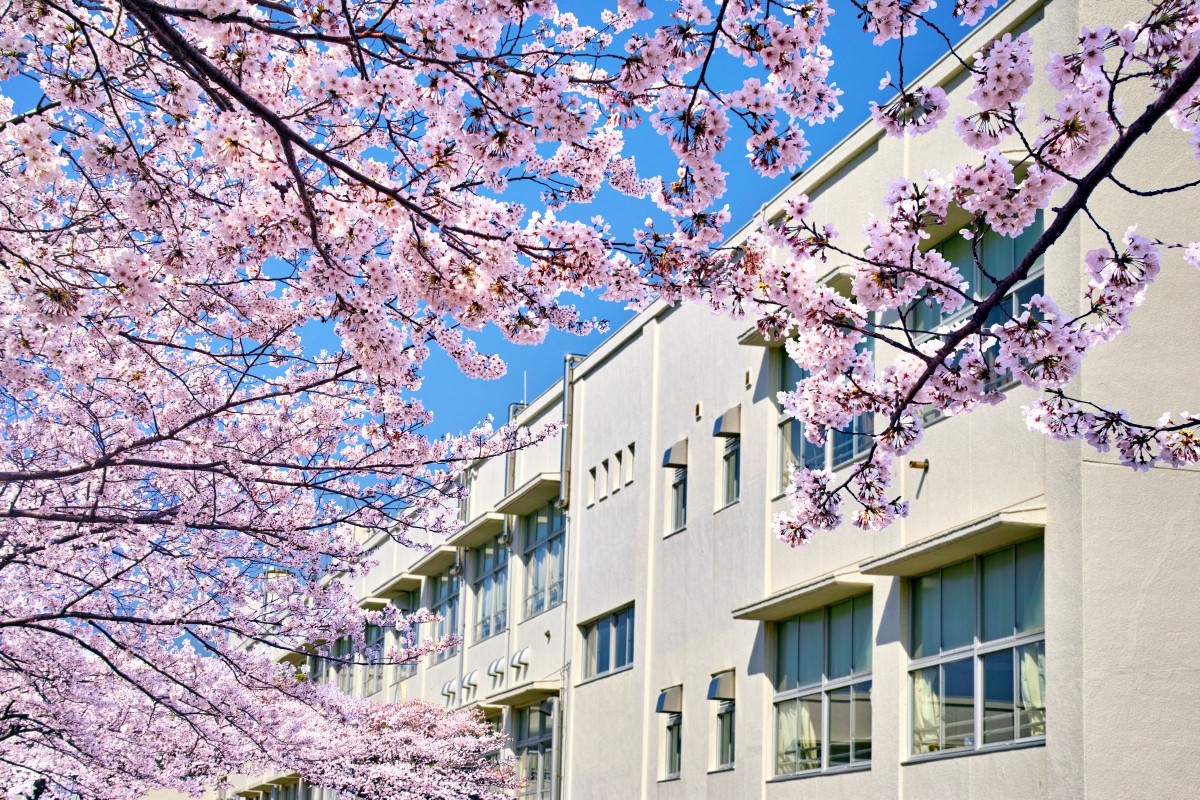
In the early Meiji period, Japan’s school year began in September, similar to many other countries. However, as teacher training schools (normal schools) gradually unified their academic year to start in April, elementary schools followed suit.
While the exact reason for the shift to April is unclear, contributing factors include changes to the conscription period in April and aligning with Japan’s fiscal year, which made administrative tasks like distributing supplies and clearing accounts more convenient.
After World War II, as part of postwar recovery efforts, cherry blossoms (specifically the "Somei Yoshino" variety) were planted across the country to rebuild famous cherry blossom spots. Over time, April became firmly established as the season for both starting school and beginning work. The timing of the cherry blossoms’ full bloom and the new school or work year came to symbolize beginnings and farewells, further embedding the image of cherry blossoms in entrance ceremonies.
Understanding Japanese Culture Through Entrance Ceremonies
Entrance ceremonies represent not only a significant milestone for children but also a warm cultural tradition in which communities come together to support their growth. These ceremonies symbolize the importance of collective life and discipline, making them more than just a school event—they’re an excellent opportunity to deepen one’s understanding of Japanese culture.
References:
Benesse Education Information https://benesse.jp/kosodate/1nensei/manner.shtml (Reference date January 7, 2025), https://benesse.jp/kosodate/1nensei/mama_suit.shtml (Reference date January 7, 2025)
Shogakukan "HugKum" last accessed March 5, 2024, https://hugkum.sho.jp/104711 (Reference date: January 7, 2025)
Kids Arise, last accessed 2024/2/23, https://kids-allies.com/column/entry-530.html (Reference date: 2025/1/7)
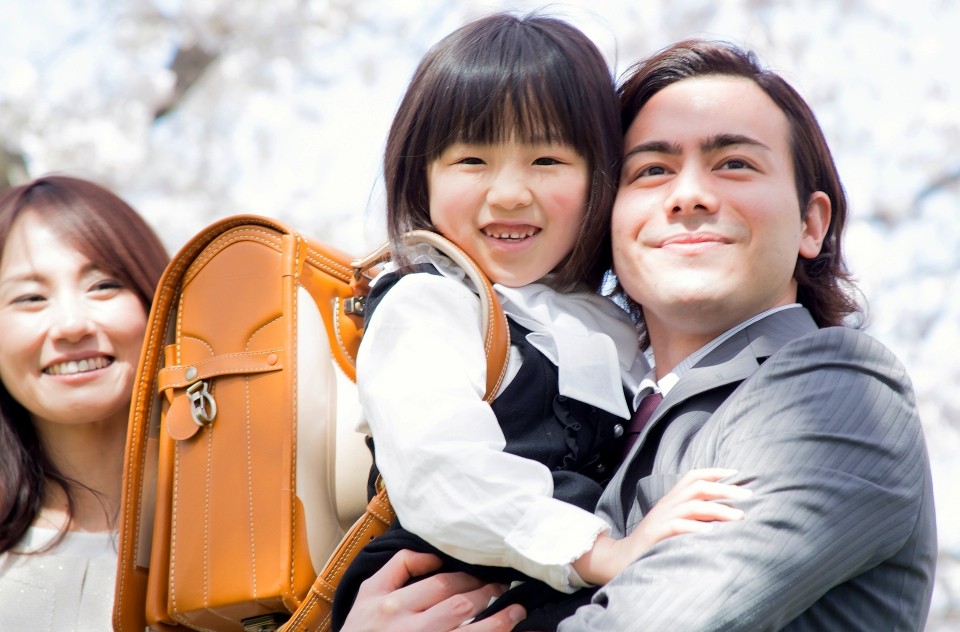
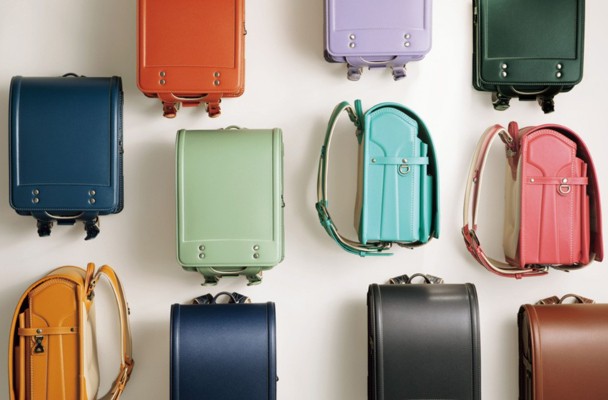
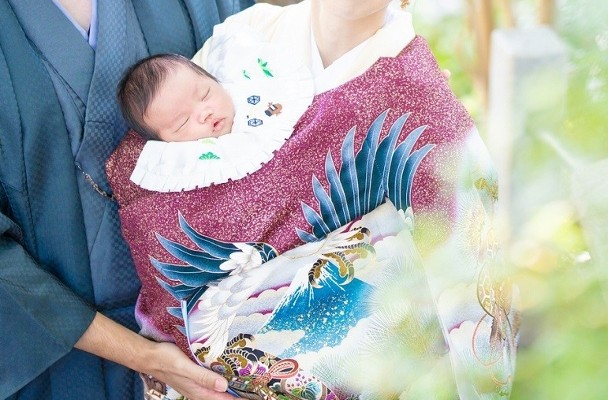

Comments